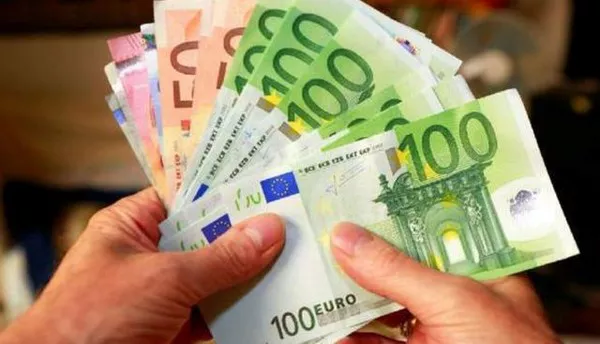Yesterday’s US Consumer Price Index (CPI) report was mixed, worse than expected and far from comforting. Headline inflation rose to 3.7% from 3.2%, above analysts’ expectations of 3.6%, and core inflation came in at 4.3%, in line with expectations. But on a monthly basis, both overall inflation data and core inflation data were slightly higher than expected. A surge in energy prices is responsible for the overall rise. In fact, gasoline prices rose more than 11% in August, accounting for more than half of the overall rise in monthly inflation.
The only good news is that core inflation over the past three months hit an annual rate of 2.4%, the lowest since March 2021 and just shy of the Federal Reserve’s 2% inflation target. Is this perhaps why there hasn’t been a bad market reaction to higher than expected monthly and annual CPI measures? The U.S. 2-year Treasury yield was slightly above the 5% level yesterday, but fell after the data was released. There is currently a 97% chance that federal funds futures activity will be paused at next week’s FOMC meeting, but the possibility of a pause in November is slightly less than The previous figure was 56% higher. To sum up, yesterday’s CPI data slightly pushed up expectations for an interest rate hike in November, but it did not change the consensus of not raising interest rates for the time being.
The European Central Bank is expected to raise interest rates
As recently as the beginning of this week, expectations for today’s European Central Bank (ECB) meeting were that there would be no rate hike. Today, just hours before the meeting, pricing points to a 25 basis point hike as the most likely scenario; money markets are pricing in a 68% chance of a 25 basis point hike.
But the data is still not optimistic. Eurozone industrial production data released yesterday looked pretty bad, with a monthly decline of more than 1% and an annual decline of 2%. This is why higher expectations of ECB rate hikes do not really boost appetite for EURUSD, with the pair encountering resistance in the 1.0765/1.070 range. If the ECB raises rates today, EURUSD could move towards the 200-day EMA at 1.0825 and the Stoxx 600 could fall below 445 (double bottom).
While there is decent downside potential for European stocks, EURUSD’s upside potential is limited by weak economic data. Indeed, the gap between U.S. and German 10-year Treasury yields has been narrowing since about three weeks, but EUR/USD has barely benefited from this, with EUR/USD falling more than 1% over the same period.
Clearly, the bleak economic outlook has investors thinking that even if the ECB raises interest rates today, it will certainly be its last, and in less than a year we’ll be talking about Europe’s first rate cut. The economy is weak.
Apparently, things are not so rosy across the English Channel. The latest data shows that the British economy shrank at the fastest pace in seven months in July. Strikes and a lack of sunlight are responsible for the bleak data. You might think that a slowdown in the economy would at least mean weaker UK inflation – a silver lining? but not. Because data released earlier this week showed U.S. unemployment rose but wage growth hit a record high, the highest since 2001. Britons’ incomes increased by 8.5% for the year, which is good news for them as they struggle to keep up with the cost of living crisis, but obviously bad news for the Bank of England (BoE), which is doing its best to curb inflation, but All in vain. Instead, they weaken economic growth. GBP is testing the 200-day moving average on the downside this week for similar reasons as the euro. Expectations for a rate hike from the Bank of England are strong, but the growth outlook looks so bleak that not many traders are willing to try a long pound position.
Now, the headache is the same for all central bankers, whether they want to raise interest rates or those who don’t. Oil prices are rising, making future inflation expectations more confusing. The United States is in a better position than the rest of the world because at least they don’t have to worry about currency devaluation making things worse. But yesterday the price of a barrel of U.S. crude oil was close to $90. Happily, the latest EIA data showed US inventories rose by €400m last week, which certainly didn’t help fuel the bull run further. U.S. crude is currently in overbought market territory. The $90 level is a psychological resistance level, with global economic data suggesting a slowdown in economic activity ahead of us. This combination requires at least a minor correction from current levels.
On the stock market, all eyes are on ARM, which is set to go public today. The company priced its IPO at $51 per share. The price is at the upper end of the proposed price range, but still below the $64 billion valuation SoftBank had when it purchased its stake from the Vision Fund.



























